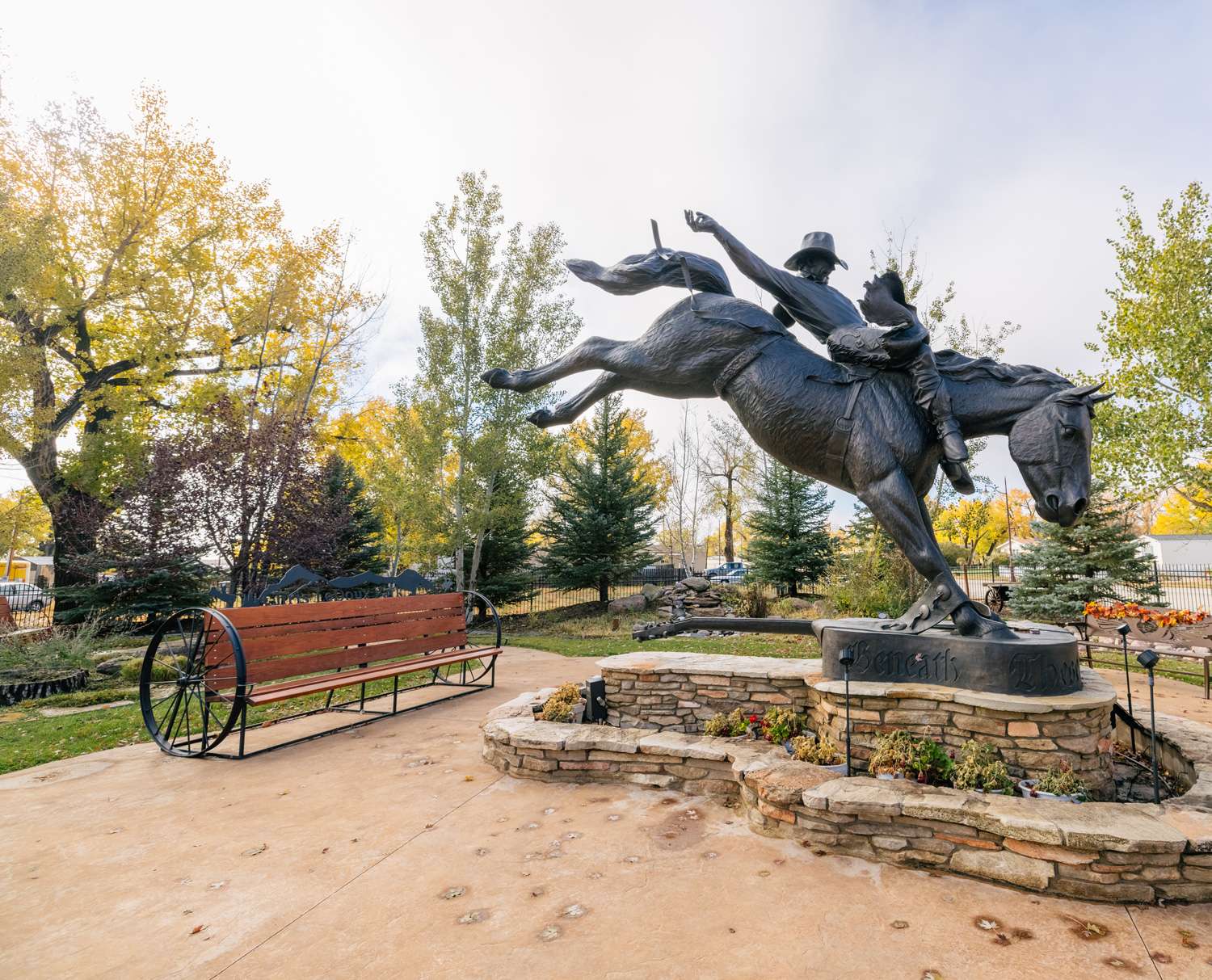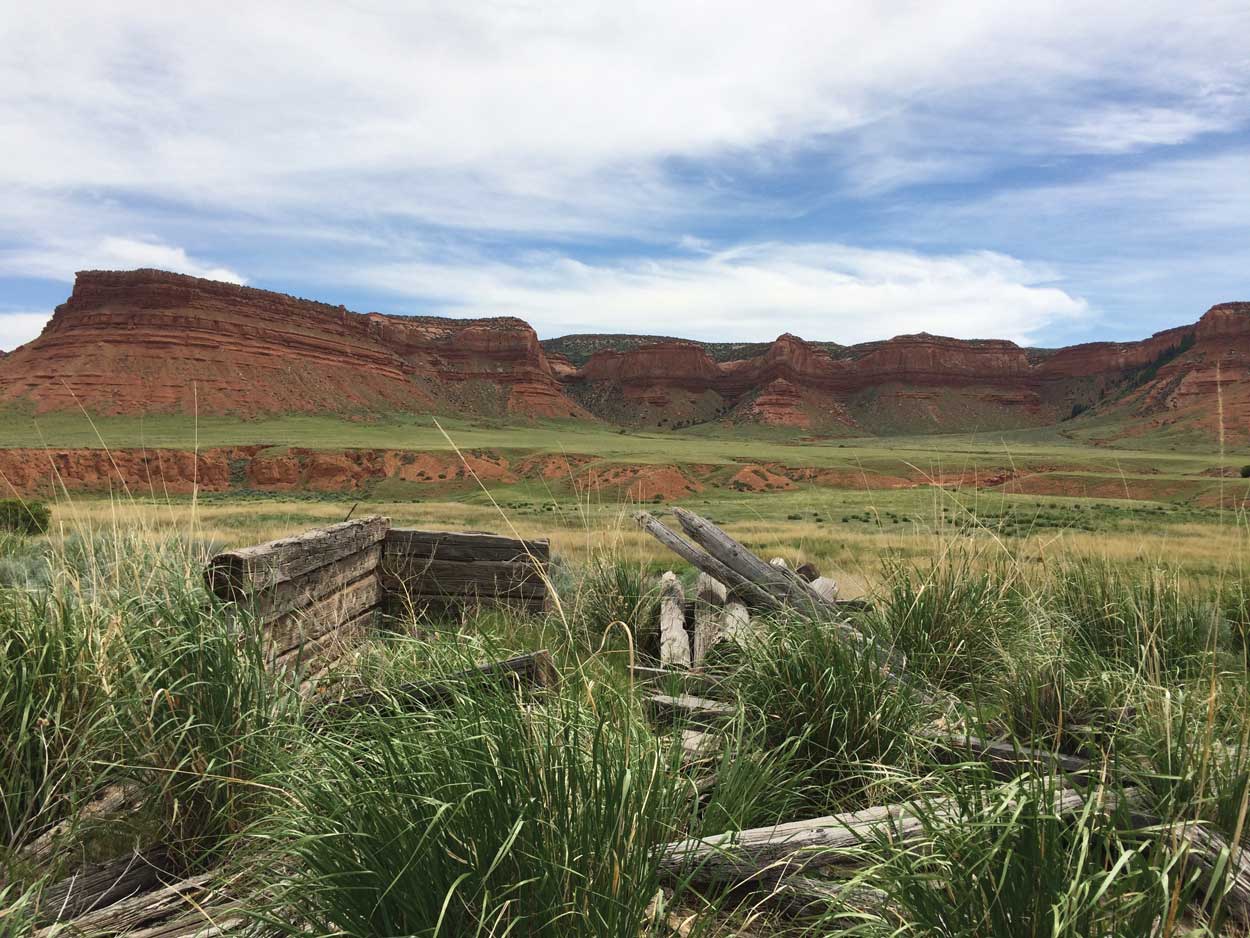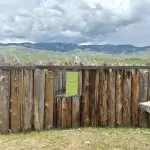The History of Kaycee, Wyoming
True Wild West
Located along Interstate 25 with incredible views of the Bighorn Mountain Range, Kaycee is rich with history. The community is a quick drive by interstate, just 30 minutes south of Buffalo. The town emerged during some of the wildest of Wyoming’s history—and even today, Kaycee likes to boast that they are a true Wild West town, with characters that may have walked right out of the 1800s.
The KC Ranch
The town’s main street is named after early homesteader, John Nolen whose ranch was located on what would become Kaycee on the Powder River. The brand he used was KC. During the Cattleman’s Invasion of 1892, the Nolan Ranch was the scene of one of the most cowardly and brutal murders in the history of the West.
On April 9, 1892, the “Cattlemen” burned Nolen’s ranch house and murdered Nate Champion and Nick Ray, who were leasing the ranch from Nolen at the time. This was the prelude to the Johnson County Cattle Wars, which was part of a plot to scare the smaller ranchers into leaving Wyoming. To this day, this lawlessness has gone by without due punishment.
Hole in the Wall
The Story: It contains a public campground, a Native American rock shelter with pictographs, and the famous “Outlaw Cave.” The infamous “Hole-in-the-Wall” Country and Outlaw Cave are where legendary outlaws Butch Cassidy, the Sundance Kid, the Wild Bunch, Jesse James and the Hole-in-the-Wall gang all hid out. The scene varies from rolling rangeland to red rock buttes to steep canyons, with amazing views. Located about 20 miles west of town is the Outlaw Cave Recreation Area.
LOCAL COWBOYS
The Story: In more modern times, Kaycee is known for producing great cowboys and country singers. Former world champion bareback rider turned country singer, Chris LeDoux, arguably is the best of the bunch. After his stellar rodeo career, LeDoux decided to throw everything into a music career. His search for a full-time touring band that could help to create his new musical vision produced a unique group of talented musicians, which is named, “Western Underground”.
Succeeding his death in March 2005, the LeDoux family and the community of Kaycee commemorated the Chris LeDoux Park and the “Good Ride Cowboy” bronze statue crafted by Johnson County sculptor D. Michael Thomas.
Robin Hood of the West
Butch Cassidy, born Robert Leroy Parker, was a notorious train robber, bank robber and leader of the Wild Bunch Gang in the Old West. He was also known as the “Robin Hood of the West” for sharing his loot with people whose lives had been ruined by the cattle barons and bankers. Not your typical outlaw, Butch preferred bowler hats and a gentleman appeal of the finer things in life.
He was a charming thief, who was well liked and is believed to have never killed anyone.
Cassidy embarked on what is considered the longest stretch of successful train and bank robberies in American history as a member of the “Wild Bunch.” Members included such infamous bandits as Harry Longabaugh (the Sundance Kid), Harvey Logan (Kid Curry) and his brother Lonny Curry, “Laughing” Sam Carey, Ben Kilpatrick (the “Tall Texan”), Black Jack Ketchum, William Ellsworth Lay (Elzy Lay), and George “Flat Nose” Curry.
The group hit banks and trains in South Dakota, New Mexico, Nevada, Utah and Wyoming. Robert Lawson, a mail clerk working on the Union Pacific Railroad, was in the mail car of a train stopped by the “Hole-in-the-Wall Gang” in the wilds of Wyoming. He recounted his experience in the June 8, 1899, issue of our local newspaper the Buffalo Bulletin.
Between robberies, the men would lie low at the Hole-in-the-Wall, one of the most famous hideouts located in southern Johnson County, Wyoming. This is also where several other outlaw gangs (the Logan brothers and Jesse James among others) holed up.
Named after a pass in an eroded rock wall mesa rising over the rolling plains and canyons, the name fits the location. A steep climb over loose rock to the top of the wall, with sweeping 360-degree views, the pass was well situated to spot approaching lawmen – and the narrowness of the approach made it easy to defend.
Today the area is a part of the Willow Creek Ranch, a working spread with a large herd of cattle. Accessible today by a series of dusty, two-track roads, the trail to the Hole-in-the-Wall attracts history buffs & tourists alike.






